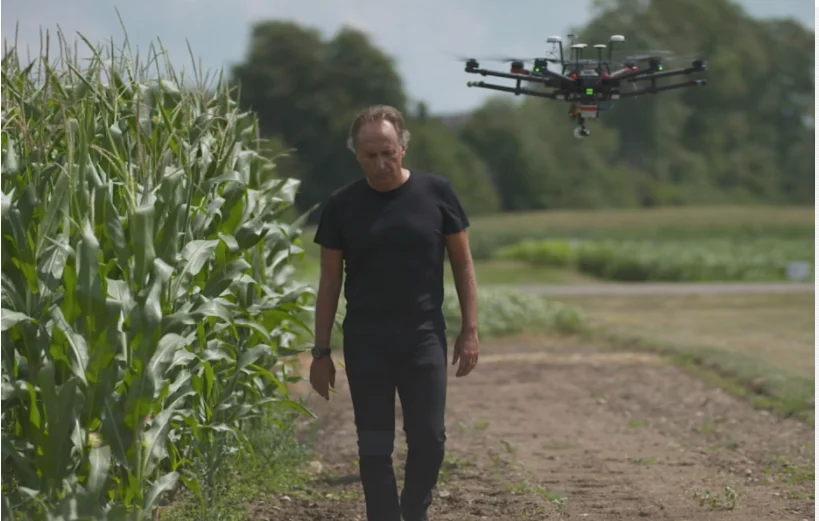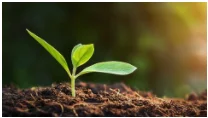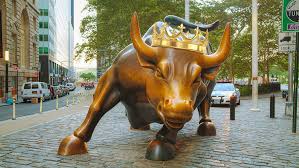Efteråret står for døren, og landmændene skal til at pløje markederne. Men hvorfor i alverden går af en verdens største banker, Morgan Stanley, op i dét? Har det noget med investeringsrådgivning at gøre? Ja, afgjort, og det er derfor, Morgan Stanley har besluttet at skaffe 1000 milliarder dollar til grønne initiativer inden år 2030. For investorer er det afgørende, at klima-krisen bliver løst, og landmændenes brug af jorden er vital – og fuldstændig overset. Halvdelen af al CO2-udslip kommer fra landbruget, og pløjning er en af de største “producenter” af CO2-udslip. Landmænde skal ifølge to amerikanske forskere så at sige pløje CO2-udslippet ned i jorden – ved slet ikke at pløje markerne. De skal dyrke jorden på en anden måde, end mennesker har gjort det i tusinder af år. Forskerne har udviklet et overvågningssystem, så landmænd bedre kan se, hvordan de skal behandle jorden klimavenligt og uden, at det går ud over produktionen og økonomien. For at det skal få virkning på klodens klima, skal hundreder af millioner landmænd bruge et udstyr, der vil koste 1500 kr. Et afgørende sigte med dette projekt er for Morgan Stanley at give investorer en forståelse af, hvordan selv landbruget har en afgørende effekt på den globale økonomi og dermed også på investorernes muligheder.
How Carbon Farming Can Help Saving the Earth
Regenerative farming can help boost crop yields and fight climate change, and one nonprofit plans to incentivize more farmers to make the switch.
Starting in late 2018, Al Gore’s Caney Fork Farms in Carthage, Tenn. started a research collaboration and gathered a group of scientists to tackle a challenge: Figure out how to use the earth itself to fight climate change by creating a systematic, scalable approach for farmers to better use soil to capture carbon and reduce greenhouse gas emissions that fuel global warming, while also boosting crop yields and profitability.
Two of those scientists went on to cofound My Soil Organic Carbon, or MySOC, a nonprofit that aims to create a database of soil carbon for farmland across the U.S., while providing farmers with low-cost tools to collect and analyze their soil samples for crop production and carbon sequestration farming, while modeling prospects for more profitability.

Overvågningsdrone i landbruget
Soil’s Contributions to a Net-Zero Future
How effective a tool is soil management in the battle against climate change? The research on the regenerative farming methods—such as no-till agriculture, cover crops and crop rotation—used at the former U.S. Vice President and Nobel Peace Prize recipient’s own 500-acre farm in Tennessee estimated that they sequestered more than 100 tons of carbon dioxide—equal to about 350,000 gallons of petrol emissions.
More importantly, those techniques, used over a five-year period, accounted for half of the farm’s estimated total carbon drawdown over the past 30 years. In short, regenerative farming is a far more effective method of soil carbon capture.
Amid the increased frequency and intensity of extreme weather events, such as floods, heatwaves and droughts linked to global warming, climate scientists are more focused on to how to use soil to sequester carbon, especially because our industrial food system emits approximately half of all global greenhouse gas emissions.1
Indeed, the Intergovernmental Panel on Climate Change found in 2019 that top-range estimates for soil carbon sequestration in croplands and grasslands per year is equivalent to almost 1.5 times annual U.S. emissions.2 Achieving that scale would require millions of farmers around the world to change their land management practices.
The research shows that they would be much better off if they did. Traditional tilling exposes organic matter in the soil to oxygen, which aids decomposition, releasing carbon dioxide and other greenhouse gases. Regenerative farming methods help to retain soil carbon, which improves water uptake and buildup of better organic matter and biodiversity. This also preserves soil quality, boosting crop growth and yield, as well as plant health and food nutrition.
The True Value of Dirt
Carbon farming could also allow farmers to sell their soil-carbon credits on the carbon market. But first they would need a way to measure how much carbon their soil can capture. The persons behind the project have already designed a prototype that farmers can use to collect soil samples, with plans for a mobile app to speed the process and give open access to all the data, MySOC’s collection prototype.
That data likely has broader use cases. Government agencies, such as the U.S. Department of Agriculture, could use MySOC data to develop a nascent inventory of soil carbon and measure the return on investment for carbon farming incentives. In the private sector, corporations that produce consumer-packaged goods or seed, for example, could better quantify and market their carbon footprint to consumers and investors who are increasingly interested in sustainability.
Bringing MySOC Tech to Farmers
Scale is key. The cofounders aim to widely distribute sampling kits in the U.S. within two years and build a full national inventory within five. They imagine a world in which farmers can view their fields from the sky and use comparative soil-carbon data to make decisions that ultimately improve their profitability, while protecting the planet.




